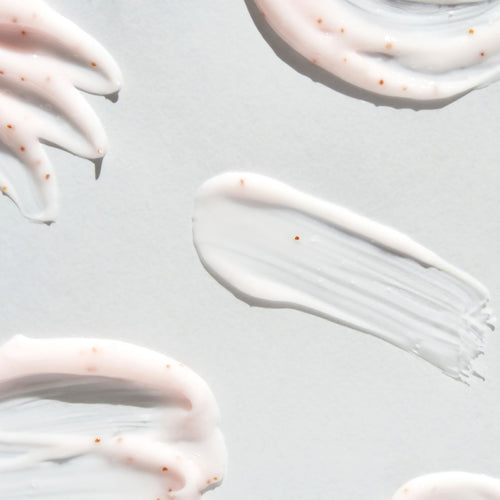A simple guide to understanding these exfoliating heroes and choosing the right one for your skin.
If you’re chasing that healthy, radiant glow, then exfoliation is your skin’s best friend. Most of us already know and love a good physical exfoliator like our Radiance Face Scrub — especially those of us with sensitive skin who want something gentle and nourishing.
But recently, the skincare world has exploded with a different kind of exfoliation: acids. And if you’ve ever felt overwhelmed trying to pick between AHAs, BHAs, or products that use both… you’re not alone!
Let’s break them down in a way that makes it super easy to understand which one is right for you.
What Are AHAs?
AHA stands for alpha-hydroxy acid. These are water-soluble acids usually derived from sugar cane, fruit, or milk — which is why they’re often called “fruit acids.” The most common and well-loved AHA? Glycolic acid.
AHAs are best for:
✔️ Normal to dry skin
✔️ Sun-damaged or dull skin
✔️ Smoothing texture & boosting glow
AHA Benefits
- Exfoliates surface skin cells to reveal fresher, smoother skin
- Improves hydration by enhancing natural moisturising factors
- Boosts collagen production, helping to reduce fine lines and wrinkles
- Evens skin tone and fades pigmentation over time
Basically, if you want brighter, more even-toned skin — AHAs are your go-to.

What Are BHAs?
BHA stands for beta-hydroxy acid, and the most common form is salicylic acid. Unlike AHAs, BHAs are oil-soluble, which means they can penetrate deeper into the pores — making them excellent for treating breakouts and congestion.
BHAs are best for:
✔️ Oily or combination skin
✔️ Acne-prone skin
✔️ Blackheads and enlarged pores
✔️ Redness or sensitive skin (yes, really!)
The Benefits of BHABHA Benefits
- Unclogs pores and removes excess oil
- Reduces inflammation and redness
- Helps manage acne and prevent breakouts
- Gentle enough for sensitive or rosacea-prone skin when used correctly
If you struggle with breakouts, blocked pores or hormonal acne, BHAs are likely your new skincare hero.
How to Choose: AHA vs. BHA
Skin Concern
Best Option
- Dull, dry, flaky skin -AHA
- Uneven tone or texture- AHA
- Fine lines or wrinkles- AHA or combo
- Oily or blemish-prone- BHA
- Blackheads or clogged pores-BHA
- Sensitive skin or rosacea-BHA (in low dose)
- Combo skin- AHA + BHA
If you’re trying to choose between them, start with your main skin concern. You can always introduce a second option gradually once your skin adjusts.
Can You Combine AHAs & BHAs?
Yes! Some products include both — and they can be super effective when done right. AHAs work on the surface, while BHAs go deep into the pores, so combining them tackles multiple concerns at once.
Just be mindful:
- Overdoing it can cause irritation or dryness
- Start slowly (1–2x per week)
- Always follow with hydration and SPF
Quick Takeaways:
- AHAs = great for glow, texture & signs of ageing
- BHAs = brilliant for acne, oiliness & congestion
- You can use both — but take it slow
- Always pair acids with SPF and moisturiser
And remember, there’s no one-size-fits-all when it comes to skincare. What works for one skin type might not work for another — so tune in to your skin, be kind to it, and if in doubt, consult a skincare expert or dermatologist.


